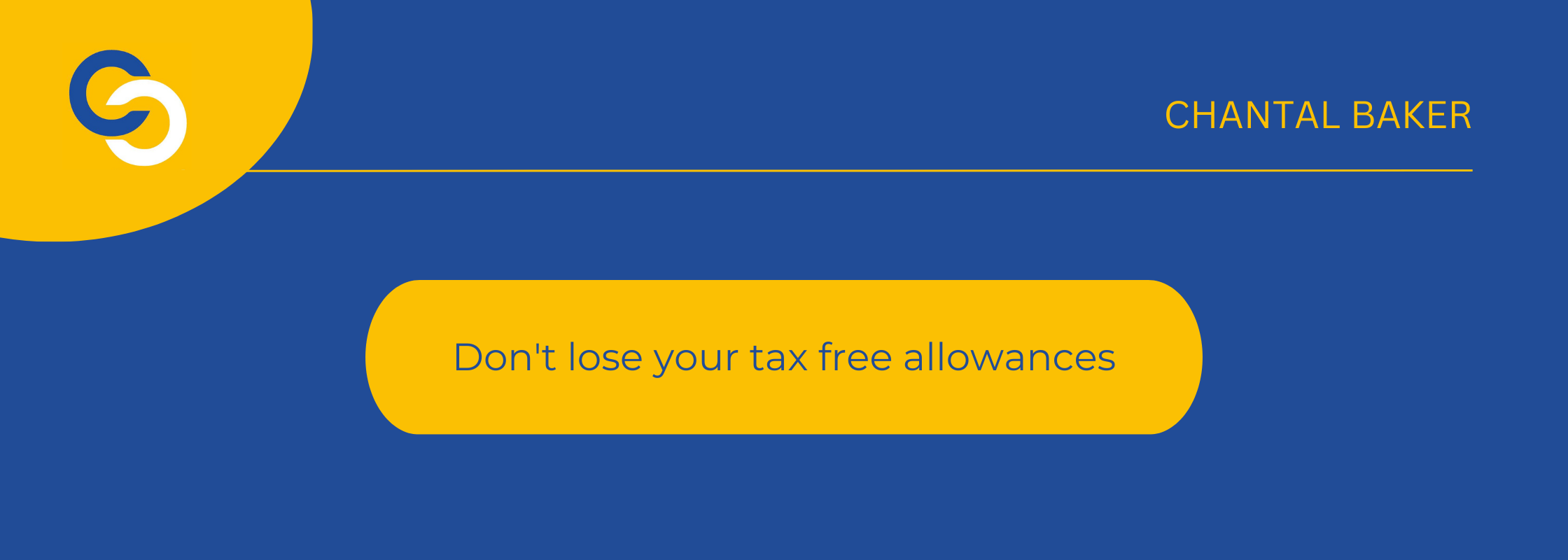
The tax year will end on 5th April 2024 and there are some tax-free allowances that if not used will be lost. This article is providing you with some of these and how you can ensure they are used and potentially reduce a future tax bill. These allowances are available to be used by all individuals and remember are lost if not used.
Capital gains tax
If you have any stocks, shares, rental property, crypto or other assets, when these are sold, the first £6,000 is exempt from tax. This capital gains tax exempt amount is lost if not used each year. The allowance can only be used once in a year. The allowance is not on each asset sold.
Dividend allowance
The dividend allowance is £1,000 and is available to all individuals no matter what rate of tax you pay. The first £1,000 of dividends received is taxed at 0%.
Inheritance tax
The main allowance to be used during your lifetime is the annual exempt gift allowance of £3,000 per donor or £250 per donee. This is an annual amount. If this annual amount is not used in one year it can be carried forward to the next year. However, it cannot be forward for more than one year.
ISA
Investments into an ISA are restricted depending on the type of ISA they are. These amounts are based on the amount input into the ISA and are not increased if funds are then withdrawn in the same year:
Total ISAs – £20,000
Lifetime ISA – £4,000
Junior ISA – £9,000
Child Trust Fund – £9,000
Marriage / civil partner’s transferable allowance
If you are married and neither of you are higher rate tax payers, (i.e., both pay tax at the 20% tax band maximum) any unused personal allowance can be passed to your spouse. The maximum amount is £1,260.
Pension annual allowance
The maximum amount an individual can have invested into their pension pot is £60,000. This includes all contributions (employee, employer, individuals). This amount is reduced through the tapered annual allowance to £10,000 if all conditions are met.
Personal allowance
Your personal allowance is £12,570 and is attributable to your income. The first £12,570 of is tax free. This is reduced by £1 for every £2 of net income over £100,000.
Personal savings allowance
The personal savings allowance is based on your tax bands. If you are a basic rate tax payer, your savings allowance is £1,000, meaning you are able to receive £1,000 of savings income at 0% tax. If you are a higher rate tax payer, your savings allowance is £500, meaning you are able to receive £500 of savings income at 0% tax. If you are an additional rate tax payer, you do not have a savings allowance.
Property allowance
If you rent a property you are entitled to claim £1,000 as expenditure against the rental property as a cost. This would therefore reduce the profits made from the rental property.
Rent a room relief
If you rent a room in your house while you are also living in the house, you are able to receive rental income of £7,500 for the year. This amount is per house and not per person. This does not apply to a buy to let property as you must be living in the property as well.
Starter savings rate allowance
For low-income individuals, this rate can be up to £5,000. However, for every £1 you earn over the personal allowance, the starter savings rate will reduce by £1. Therefore, this allowance is only suitable for those with an income of less than £17,500.
Trading allowance
If you undertake a trading activity but do not earn much from it, you are entitled to claim the trading allowance. Therefore, there is no need for you to declare trading income if the total income earned in the year is up to £1,000. This is for the total amount actually received and not after any costs have been deducted.
Please always seek professional advice before taking any action. We are happy to answer questions in future issues. Please send your questions through the contact us page on our website: www.champconsultants.co.uk
You can also find me on TikTok here.
Chantal Baker, is the director and founder of Champ Consultants Ltd, an accountancy and tax consultancy practice in Caterham. Please do follow us on the various social media channels.
